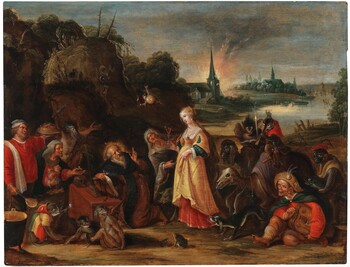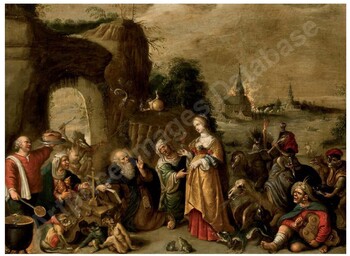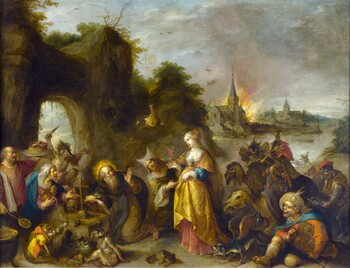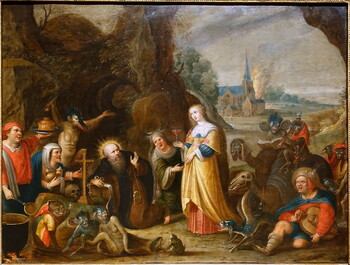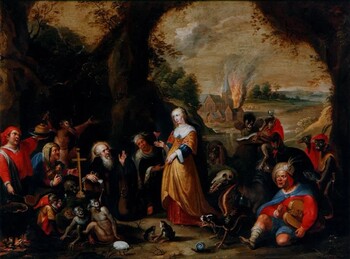18.500 €
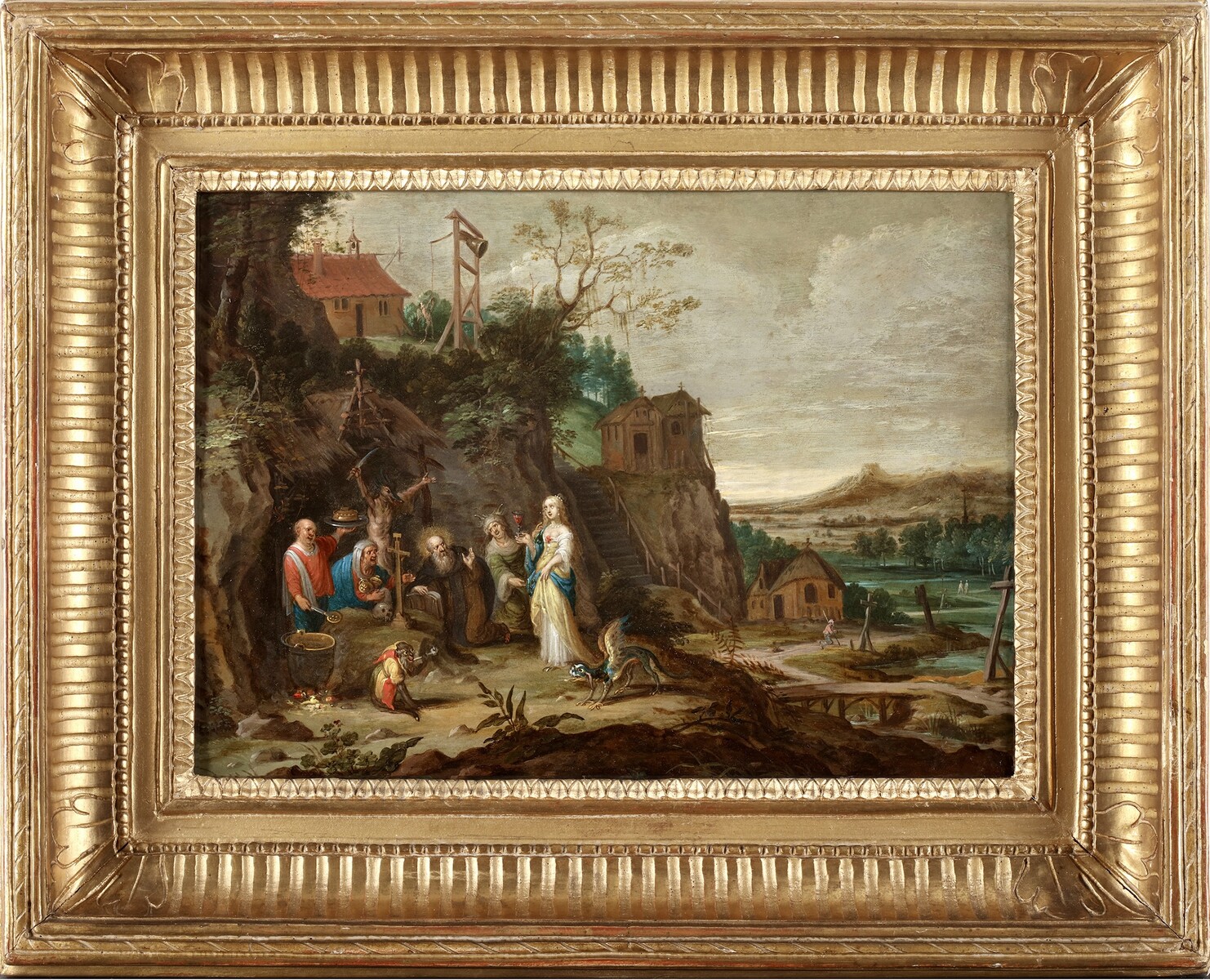
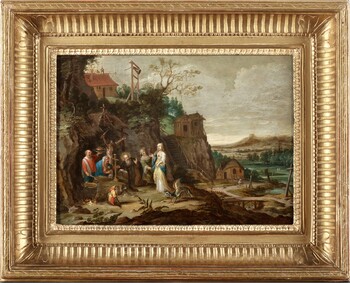
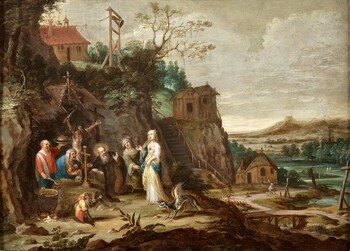
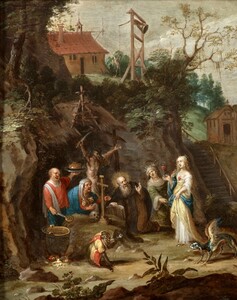
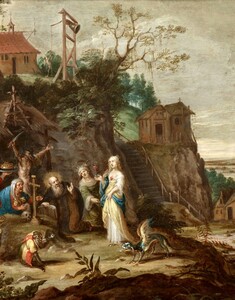
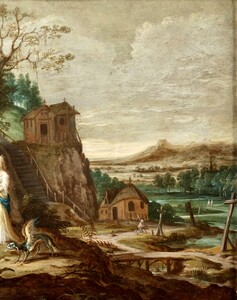
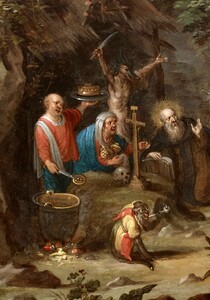
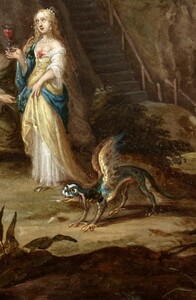
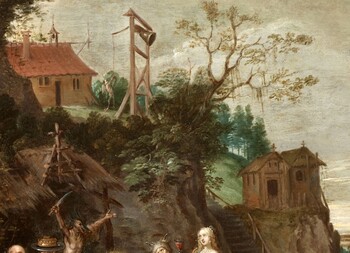
In short
Cornelis de Baellieur the Elder was an Antwerp painter who was strongly influenced by Frans Francken the Younger. Our painting partly copies a popular composition by Frans Francken II of which several versions exist: some are attributed to Frans Francken II or to his workshop, others to Cornelis de Baellieur I.
Saint Anthony was the first Christian who consecrated a large part of his life to solitude: an existence of abstinence and self-denial free of earthly attachments. Our painting shows how the devil attacked his mind with lustful thoughts and his body with seductive or frightful creatures.
About Cornelis de Baellieur I
Flemish painter
Antwerp 1607 – 1671 Antwerp
His last name is sometimes spelt de Baeilleur.
Painter of religious subjects and of genre scenes. Also active as an art dealer.
Pupil since 1617 of Anton Liesaert (1578 – after 1627).
In 1626 he became a Master in the Antwerp Painter’s Guild of Saint Luke (in 1644 be became Dean of this Guild).
De Baellieur was strongly influenced by Frans Francken II (Antwerp 1581 – 1642 Antwerp), an important history painter of biblical, mythological and allegorical subjects. Just like Francken de Baellieur also painted cabinet pictures depicting art galleries or private patrons admiring their collections.
Cornelis was the son of a dealer in paintings, who was also active as a glass-blower.
Cornelis married in 1633, but his wife died already less than a year later while giving birth to a daughter. He re-married at the end of 1636 and he had five more children, among whom Cornelis II (1642 – 1687) who became a decorative painter of bas-reliefs in grisaille. The art dealer and painter Victor Wolfvoet II (1612 – 1652) was godfather of one of the other five children.
The two main Flemish art dealers also belonged to the close circle of de Baellieur:
- he was a nephew of Guilliam Forchondt I (1608 – 1678). The company of Forchondt (also known as Forchoudt), himself also a painter, exported a lot of artwork to Central Europe (especially to Vienna) and to a lesser extent to Spain (and Portugal).
- de Baellieur’s sister married Forchondt’s main concurrent, Matthijs Musson (1593 – 1678), who specialised in export to Holland, Paris and Spain.
About the Temptation of Saint Anthony
Saint Anthony was born circa 251 in Middle Egypt. We know his life fairly well, thanks to the biography written by his disciple Athanasius.
Following his parents’ death he gave away his money and around the age of 20 he started a life full of want as a hermit becoming the most famous monk of ancient Christendom. He lived an ascetic life of austerity, sacrifice and extreme solitude.
The first 35 years he lived retired into solitude in a grotto next to his birthplace, the following 20 years on a mountain on the other bank of the Nile and finally in a community of hermits in an oasis in the desert.
Though he led a hard life, full of deprivation, Anthony was very long-lived: death (which he had predicted) took him at the age of 105, on the 17th of January 355 (or 356).
Saint Anthony became a model for the denial of vice, specifically pleasures of the flesh. During his isolation he had to fight temptation by Satan under different forms, especially under that of the most seductive woman or also of wild beasts, demons and monsters. He had to fight evil thoughts, hallucinations, lusts and desires of all kind. This is the subject of our painting.
Anthony’s veneration grew rapidly in the Western church:
- in the 11th century a Byzantine emperor had given his relics to a French count;
- accounts of miraculous healing of skin diseases, especially those afflicted with the widely spread St. Anthony’s fire, an inflammation of the skin due to ergot poisoning, led to the founding of the Hospital Brothers of Saint Anthony;
- his life was also described in the popular ‘Legenda Aurea’ or Golden Legend. This was a medieval collection of legendary lives and accounts of miracles of important Christian saints compiled around 1260 by Jacobus de Voragine, the archbishop of Genoa.
The iconographical theme of the Temptation of Saint Anthony goes back to the late Middle Ages, to Hieronymus Bosch. It was a very popular theme in Holland and in Flanders, where we can trace a line from Pieter Brueghel I into the 17th century to David Teniers II, David Ryckaert III and Mattheus van Helmont.
Why should you buy this painting?
Because this grotesque drôlerie is a playful example of Flemish humour in 17th century art.

